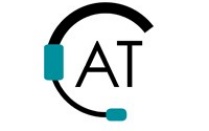Steps 1.1 through 1.5
Key question to answer in Activity Stage 1: Can the identified problem and potential solution be clearly and consistently articulated in objective terms (as described by the direct beneficiary of the solution)? Do not assume that expertise in a field of practice translates into articulation of a problem/solution.
To view supporting evidence, click on magnifying glass icons or hyperlink text.
Click on the toolbox icon to view tools related to each step.
Click on table icon to view subcategories of Freeware.
Step 1.1
Identify a problem faced by persons with disabilities that could potentially be addressed by a technology-based device. Assess need for the envisioned Freeware (instructions/software) by gathering sufficient and detailed input from the intended primary user group (e.g., Persons with disabilities/Family/Professionals) along with all relevant information sources and potential secondary user groups (Researchers; Clinicians; Policy/Funders; Consumers; Brokers; Manufacturers).
Key question: What criteria define the likely user of this Instrument/Tool? Citation: Moore, G.A. (2014). Crossing the Chasm, 3rd Edition. New York, NY: HarperColllins Publishers.
Step 1.2
Define the problem (need) as a gap in some specific functional utility and also identify intended target audience for solution. Identify this project's specific context for both Problem and Solution.
Key question: Was the idea for this Instrument/Tool truly derived from customer needs (or was it perhaps considered to be a natural evolution of research and development?)
Step 1.3
Propose plausible solution (goal) to problem in the form of a new Freeware offering. Once done, thoroughly investigate whether the envisioned solution to the validated problem already exists, and if not then determine why not. Address two key questions: 1) How is the proposed solution superior to existing solutions — if they exist? 2) Why does the envisioned solution to the validated problem not yet exist?
Key question: Will user fees or external revenue (ads) offset the projected costs of development, hosting, marketing and support?
Step 1.4
Determine the contribution of this project with respect to the proposed deliverable(s). Will the project end with:
- A Conceptual Discovery about the problem/solution suitable for publication/presentation (via NtK Discovery Phase)?
- A Functional Prototype demonstrating proof of concept as an invention (via NtK Invention Phase);
- A Commercial Product deployed in the marketplace (via NtK Innovation Phase)?
A key question to answer in Step 1.4 is: What Stakeholders are positioned to uptake and apply my project's output to achieve the end product output?
Opportunity for Universal Design (UD). Be mindful that the problem might be shared by other user groups beyond people with disabilities.
Step 1.5
Outline the path from planned project output (Conceptual Discovery; Prototype Invention; or Product Innovation) to the target market and beneficiary stakeholders. Address another set of key questions: 1) How will target users find and assess the Product? 2) What partners will be needed to complete downstream Stages/Gates?
A key question to answer in Step 1.5 is: How will target users find and assess the utility of this Freeware software product? Developing a 'user community' is an important consideration here.
Decision Gate 1
Compute the development costs and ongoing maintenance costs. If these costs are greater than the current funding source, or extend beyond the current funding cycle — determine what sources may be required for sustainability.
Key question: If the Gap Analysis determines that the perceived output will require continued development support and/or ongoing maintenance, can project continue under Freeware model, or should it shift to Commercial Product model?
Project leader decides to to either continue on to Stage 2, reiterate targeted Steps in Stage 1, or terminate project due to inability to clearly articulate any of the following critical elements: Problem, Solution, Target Audience, Intended Output or path from Project Output to Market Deployment.
Note: The NtK Model for Freeware contains Stages, Steps and Gates that may vary across the five sub-categories, as described in the five columns below.
| Freeware | Fee App | Freemium/>$5 | Free DIY | Fee DIY/Training |
|---|---|---|---|---|
| Required | Required | Required | Required | Required |















